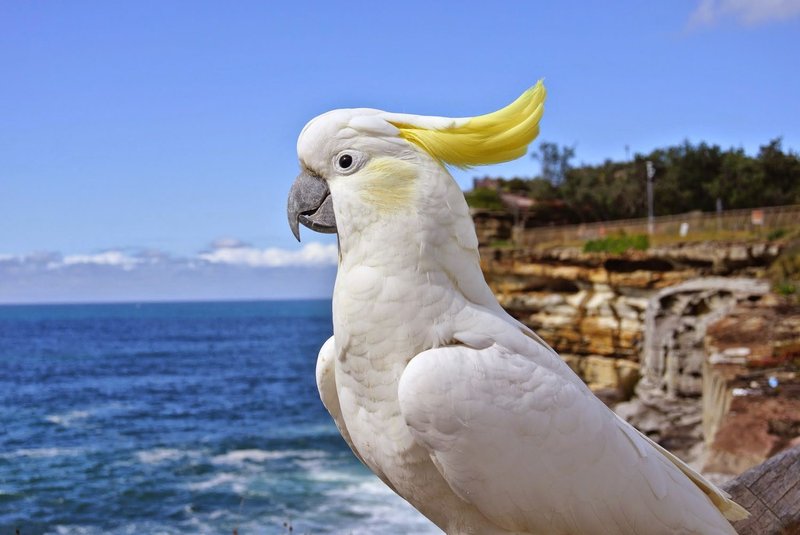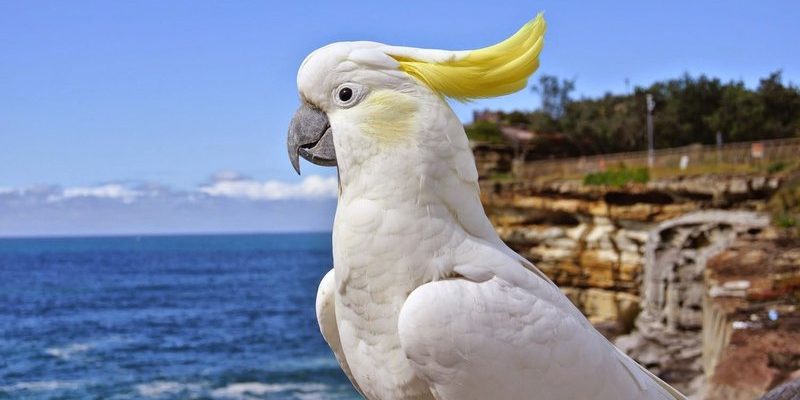
Imagine wandering through a lush rainforest or sitting in an open grassland. These are just a couple of the breathtaking settings where you might meet a cockatoo. In this article, we’ll explore the different global habitats and ranges where you can find these charming birds, from Australian outbacks to tropical islands. Let’s dive into the world of cockatoos and see where they call home!
Understanding Cockatoos: A Quick Overview
Before we jump into the habitats, let’s take a moment to understand what cockatoos are all about. Cockatoos are part of the parrot family and are known for their striking appearance and vocal abilities. They come in various species, each with distinct features and personalities. Some are social and love to interact with humans; others might prefer the company of their feathered friends.
Here’s the thing: these birds are incredibly intelligent, capable of problem-solving and even mimicking human speech. As you explore their habitats, you might notice how their behavior changes based on their environment. That’s part of what makes observing them so fascinating!
Australian Outback: Home of the Cockatoo
The Australian outback is perhaps the most iconic habitat for cockatoos. This vast, arid region is perfect for species like the Sulphur-crested Cockatoo and the Black Cockatoo. Here, you’ll find them soaring across the clear blue skies, often in large flocks, creating a cacophony of sounds that echoes in the dry landscape.
These cockatoos thrive in open woodlands and sparse scrublands. They love to feed on seeds, nuts, and fruits found in their environment. When you’re in Australia, visiting places like the Northern Territory or Queensland will give you a solid chance of spotting these remarkable birds. Just keep an eye out for their signature crests standing tall!
Features of the Australian Landscapes
In the Australian outback, the unique features of the landscape play a big role in the cockatoos’ behavior:
- Open Woodlands: Perfect for nesting.
- Water Sources: Essential for survival in arid regions.
- Food Availability: Abundant seeds and fruits support a thriving population.
Rainforests of New Guinea
If you’re dreaming of lush greenery and vibrant wildlife, the rainforests of New Guinea should be on your list. The Greater Sulphur-crested Cockatoo and Red-vented Cockatoo thrive in this rich habitat. The thick foliage offers plenty of food sources like fruits and seeds, making it a paradise for these birds.
In the rainforests, cockatoos interact with their environment in interesting ways. They often forage high in the trees, using their strong beaks to crack open hard nuts. If you’re lucky, you might witness a group dancing through the branches or hear their playful calls echoing through the trees.
Unique Traits of Rainforest Habitats
Rainforests offer a wealth of resources that support cockatoo populations:
- Diverse Ecosystem: Various plants provide food and nesting sites.
- Humidity and Rain: Ideal for year-round living.
- Species Interaction: Cockatoos coexist and interact with many other bird species.
Islands of Indonesia: A Tropical Paradise
Moving on to the lush islands of Indonesia, you’ll find an array of cockatoo species, including the colorful Umbrella Cockatoo. These birds thrive in tropical climates and often inhabit coastal and forested areas. The combination of tropical temperatures and rich biodiversity makes Indonesia an ideal spot for birdwatchers seeking to catch a glimpse of these lovely creatures.
In these habitats, cockatoos often form strong, social bonds and can be seen in pairs or small groups. Their playful nature brings joy to anyone lucky enough to spot them. Plus, the stunning backdrops of beaches and jungles make the experience even more magical.
The Environment in Indonesian Islands
The islands of Indonesia provide unique habitats for cockatoos:
- Coastal Forests: Abundant food sources from tropical plants.
- Island Diversity: Different species adapt to various island environments.
- Strong Social Structures: Cockatoos often live in close-knit families.
Urban Environments: Cockatoos in Cities
You might be surprised to learn that cockatoos can also thrive in urban environments! Cities like Sydney and Melbourne in Australia are hotspots for the Long-billed Corella and Galah. These clever birds adapt well, often foraging in parks and gardens for food.
Urban cockatoos are known for their bold behavior. They sometimes take advantage of human activity, scavenging for scraps or stealing birdseed from backyard feeders. If you find yourself in an Australian city, don’t miss the chance to see these charmers up close!
Urban Adaptations of Cockatoos
Urban life presents both challenges and opportunities for cockatoos:
- Food Scavenging: They’ve become experts at finding food in human environments.
- Nesting Preferences: They often use buildings and trees for nesting.
- Behavioral Changes: Their social structures may adapt to urban life.
The Importance of Conservation for Cockatoos
As charming as cockatoos are, many species face threats due to habitat loss, illegal trapping, and climate change. Understanding where to spot these birds is crucial not just for birdwatching but for conservation efforts as well. By knowing where they thrive, we can better protect their habitats.
Conservation organizations work tirelessly to ensure that these vibrant birds have a future. Supporting these initiatives and spreading awareness about the importance of their ecosystems can help make a difference.
Conservation Efforts and Your Role
Here’s how you can get involved in cockatoo conservation:
- Support Local Organizations: Donate or volunteer.
- Spread Awareness: Share information about cockatoos and their habitats.
- Responsible Birdwatching: Follow guidelines to minimize disturbance.
Final Thoughts on Spotting Cockatoos
Whether you’re planning a trip to Australia, exploring the rainforests of New Guinea, or just wandering in your local park, keep your eyes peeled for cockatoos. These vibrant birds are not just beautiful; they offer a glimpse into the diverse ecosystems they inhabit. From their playful antics to their social structures, observing cockatoos can be an unforgettable experience.
As you explore their habitats, remember the importance of conservation and the role we all play in protecting these amazing creatures. Cockatoos, with their striking personalities and unique lifestyles, truly make the world a more colorful place. So grab your binoculars and get ready for an adventure—you never know what you might see!

